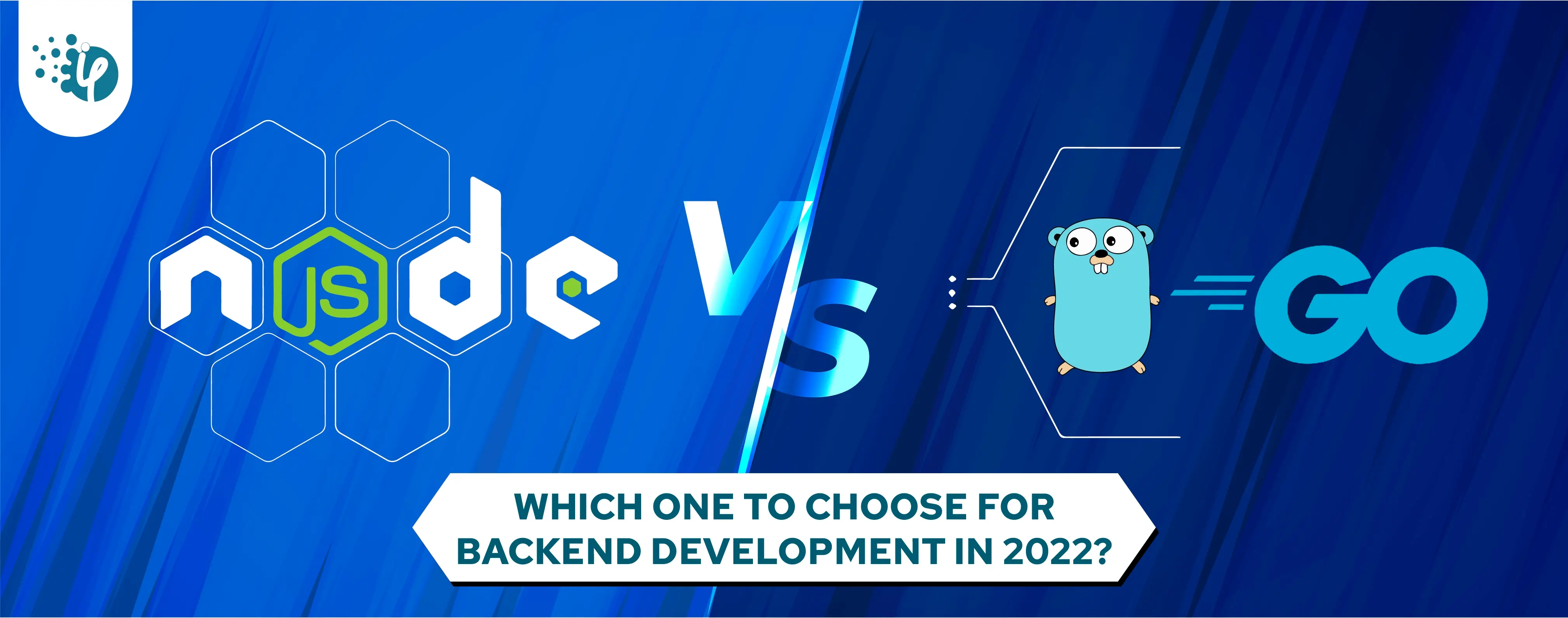How to Do Forecasting in Power BI (Steps & Accuracy Metrics)
Remember our last guide - Power BI forecasting? It revealed things that truly blocks accuracy, both structural and situational. Now it's time to take the next step. Knowing Power...
Listening is fun too.
Straighten your back and cherish with coffee - PLAY !

Node is an eminent JavaScript runtime environment that is often mistaken for a programming language. Node is used to create background environments for web apps, chat applications, streaming, and more. Well, node might be a popular option in the market these days but there is another option that is getting some hype. i.e., GO language.
Go is a programming language developed by Google experts and is also known as GoLang. It is similar to C as it is a statically typed, open-source, and multi-purpose language. It possesses the speed of Python and the benefits of C. GoLang also comes with memory safety, garbage collection, and communicating sequential processes type concurrency. GoLang has become popular in terms of backend development because of its simplicity and similarity to C and C++. Now, let’s see what each offer in terms of its uses.
Node is widely known for its speed and efficiency. Its creation was mainly targeted to solve the problem where web applications need concurrency and real-time two-way communication. Node was able to solve this problem and offer it and very good speeds.
Golang is a language that is also known for its speed. It is actually faster than Node in terms of raw performance and speed. With Go, the code is directly compiled into machine language, making it generally faster compared to others as they must be interpreted or have their own virtual environments. In real-time applications, Go outperforms most languages as well.
Node is easier to get into for beginners as well as experienced JavaScript developers. OOP (Object Oriented Programming) basics and some understanding of how JavaScript works are all you need to dive into Node.
SimplicityNode keeps it simple as developers can use the same language on both the front-end and back-end side. It helps in reducing file sizes and provides a cleaner structure. It will also allow for code reusability, making the development process easier.
Easier to marketApplications built using Node are very quick to build and scale. This allows startups to quickly build and deploy Node applications.
High performanceNode provides high performance as it is interpreted on the Chrome V8 engine. The Chrome V8 engine compiles the JS code directly into machine code.
CommunityNode has a large and very active community. This is helpful for beginners and experienced developers as well. An active community helps in enhancing the already efficient environment. It is believed that an active community will allow for more new developers in Node.
ExtensibleNode can be highly extensible. We can customize and enhance node as per our needs.
One of the recurring complaints of node is that the API keeps on changing. This causes developers to keep on changing code.
class="pdmtop10"Lack of robustnessNode might have lots of libraries, but it lacks robustness. Strong library support is lacking in JavaScript and so this can be a con of using node.
Asynchronous modelThe asynchronous behavior of Node can be extremely useful. Yet some developers do not like its nature and prefer the older I/O blocking method.
Go has a small to medium learning curve. It is usually easy to learn if you are aware of the basics of computer programming and OOP (Object Oriented Programming). A beginner can easily understand Go and get used to it within a couple of months.
SpeedGo is one of the fastest-performing languages out there. It provides great execution speed and is faster than Node. Its compilation is beyond most languages' speed.
Optimal performanceAs the code will be statically typed it will ensure higher speeds compared to other interpreted languages.
DocumentationGo documentation is genuinely great. It is very helpful for beginners and allows for an easier debugging process. You can find the documentation for Go here.
The documentation also guides you through a step-by-step process of creating basic tasks like modules and so on.
Excellent concurrencyGo is usually known for its concurrency in the community. It is one of its strong points. Go has a different approach when it comes to bringing concurrency to the table. Go has Goroutines which are used to make concurrency possible.
GrowthGo is already one of the most in-demand languages in the market as of now. Go will continue to grow in demand in the future too as other companies recognize the importance and benefits of using Go as well.
Go is a fantastic language, but it still has a few flaws that developers dislike. Here are the cons of using Go:
TimeGo takes a lot of time compared to other languages, as it is a statically typed language. We will have to write more lines of code in Go compared to a language like Python that is not that descriptive. This is something that normally turns developers off since spending more time writing is not desirable when other languages may deliver faster outcomes.
New languageIt is a newer language in terms of demand and hype. The language was actually found in 2009. With the language being new, developers can often face issues with existing libraries. The lack of SDKs also causes developers to write extra code.
NicheWhen we talk about languages and frameworks they often are related to their niches. Go is an exception. It hasn’t found a proper niche for itself yet in the market. It is used in web development, AI and ML projects, and many more areas.
GUI libraryGo has no GUI library so using it can be tricky as mostly we have to find third-party solutions for it instead of using native solutions in our project.
In this blog, we learned about the strengths and weaknesses of using both Node and Go. These languages, being great in their strengths, also have some weaknesses. In the end, it will always come down to the demand of the project and what is best for it. Developers usually opt for an easier-to-code approach but sometimes time and efficiency are also important. At the end, these languages are definitely worth investing your time.

Remember our last guide - Power BI forecasting? It revealed things that truly blocks accuracy, both structural and situational. Now it's time to take the next step. Knowing Power...

Security has always been a major concern. Your company spends millions on cybersecurity tools, and guess what? You’re still vulnerable. When you're working in the cloud, especially...

Automation isn’t just a trend anymore. It’s a must-have for any business relying on the Cloud. As the firm grows, cloud infrastructure gets more complex. So, choosing the right Infrastructure...